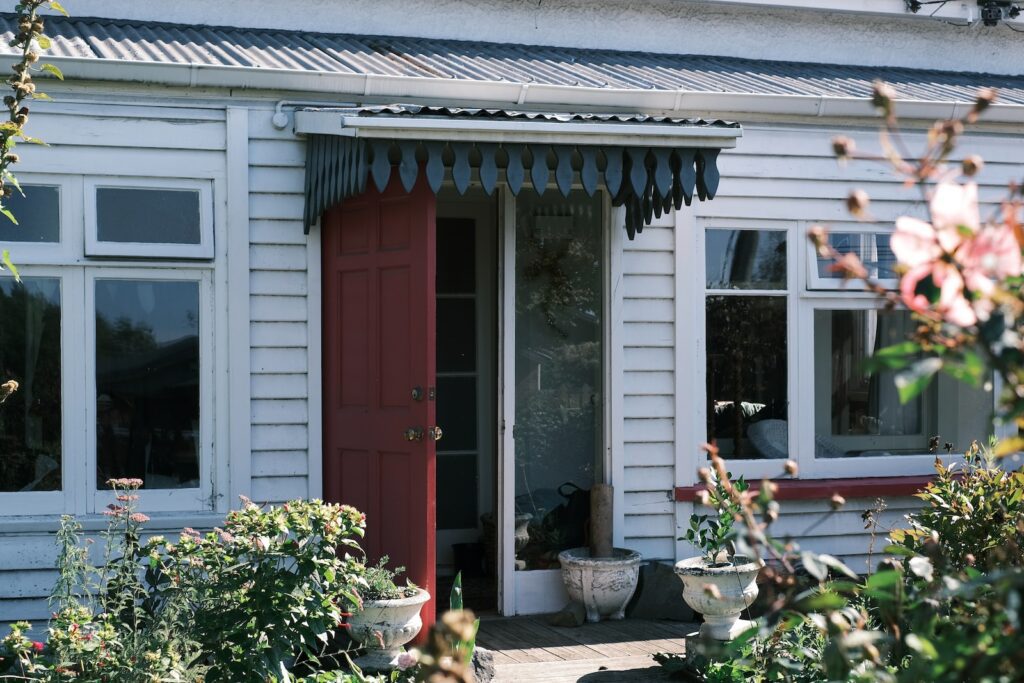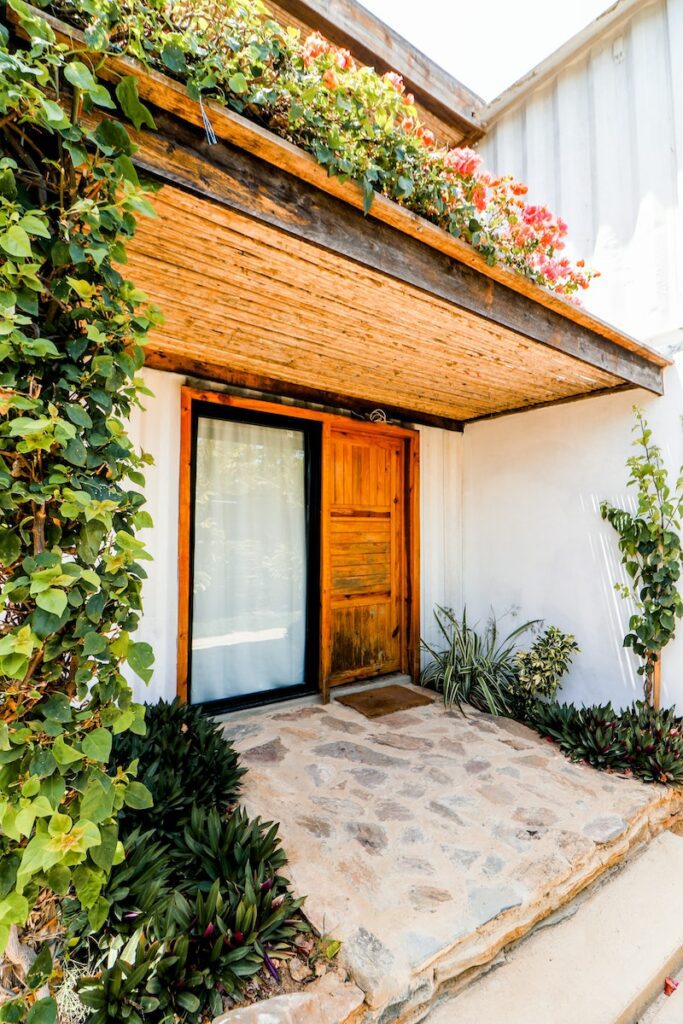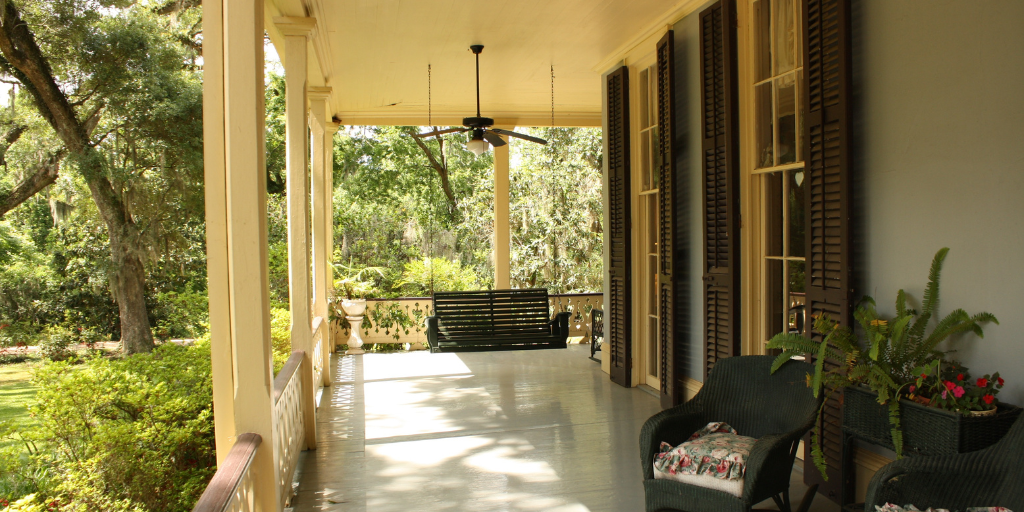Welcome to the ultimate guide on porch canopy repair! Your porch is a vital extension of your home, providing a shaded retreat where you can enjoy the fresh air and connect with nature. However, over time, wear and tear can take a toll on your porch canopy, leaving it damaged, faded, or in need of repair.
But don’t fret! With a little know-how and some simple techniques, you can restore your porch canopy to its former glory, creating an inviting space for relaxation, entertainment, and outdoor gatherings.
In this comprehensive guide, we’ll walk you through the steps of porch canopy repair, from identifying common issues to selecting the right materials and executing the necessary repairs. Whether you have a fabric canopy, a metal structure, or a combination of materials, we’ve got you covered. So, grab your tools and let’s get started on rejuvenating your porch canopy!
Common Issues with Porch Canopies
Contents
Your porch canopy is exposed to various weather conditions and constant use, which can result in several common issues. Understanding these problems will help you address them effectively and restore your porch canopy to its optimal condition.
Fading and Discoloration
Prolonged exposure to sunlight can cause your porch canopy fabric to fade and lose its vibrant colors over time. This can give your porch an aged and worn-out appearance. Additionally, discoloration may occur due to mold, mildew, or other environmental factors.
Tears, Rips, and Holes
Accidental tears, rips, or holes can occur in fabric canopies, especially if they are subjected to sharp objects or rough handling. These damages not only affect the aesthetics but also compromise the functionality and protection provided by the canopy.
Rust and Corrosion
For metal porch canopies, rust and corrosion are common issues, particularly in humid or coastal areas. The constant exposure to moisture and the elements can cause metal components to deteriorate, leading to weakened structures and compromised durability.
Understanding these common issues will help you determine the necessary repairs and select appropriate materials and techniques to restore your porch canopy. Let’s move on to the next section to learn how to assess the damage and decide whether repair or replacement is the best course of action.
Assessing the Damage: Where to Begin
When it comes to porch canopy repair, the first step is to assess the extent of the damage. This will help you determine whether repairs are sufficient or if a complete replacement is necessary. Here’s how to assess the damage:
Visual Examination
- Check for rust and corrosion: Look for signs of rust or corrosion on the metal components of your canopy. Rust spots, peeling paint, or discolored areas are indications of damage.
- Examine joints and connections: Inspect the joints, screws, and connections of your porch canopy for any looseness, cracking, or bending. These issues can compromise the structural integrity of the canopy.
- Evaluate the overall condition: Consider the overall condition of the canopy, including any dents, warping, or damage to the material. Assess if the damage is localized or widespread.
Functional Assessment
- Test functionality: Check if the canopy is still functioning as intended. Open and close it to ensure smooth operation. Pay attention to any sticking, misalignment, or difficulty in movement.
- Assess stability: Determine if the canopy is stable and secure when in use. Shaking or wobbling indicates structural weakness that needs attention.
Seek Professional Advice
- Consult a professional: If you’re uncertain about the extent of the damage or how to proceed with repairs, it’s wise to consult a professional. An expert can provide a more accurate assessment and recommend the best course of action.
Determining Repair vs. Replacement
After a thorough inspection, you’ll have a better understanding of whether your porch canopy requires repair or replacement. Consider the following factors:
Extent of Damage
- Minor damage: If the damage is limited to a few minor issues, such as isolated rust spots or loose screws, repair may be sufficient.
- Significant damage: If the damage is extensive, such as widespread rust, structural instability, or major material deterioration, replacement may be necessary to ensure long-term durability and safety.
Cost-effectiveness
- Repair costs: Evaluate the estimated cost of repairs compared to the cost of a new canopy. If the repair costs are significantly lower, repair may be the more cost-effective option.
- Future maintenance: Consider the long-term maintenance costs of the canopy. If repairs are frequent and costly, replacement with a more durable option could be a better investment.
Aesthetics and Functionality
- Desired aesthetics: Assess if the current canopy aligns with your desired aesthetics. If you’re looking for a fresh look or a different style, replacement can provide the opportunity to achieve your desired appearance.
- Functional improvements: Determine if a replacement canopy offers functional enhancements, such as improved ease of use, increased stability, or enhanced features, that would benefit your porch.
In the end, the decision between repair and replacement depends on the specific condition of your porch canopy, your budget, and your preferences. Take the time to carefully evaluate these factors and weigh the pros and cons of each option before making your final decision.
Repairing the Porch Canopy
Once you have assessed the damage, it’s time to proceed with the repairs. Here are the steps to repair your porch canopy:
Frame Repairs
- Tighten loose joints: If you notice any loose joints in the frame, use a screwdriver or wrench to tighten them. Apply wood glue to reinforce the joints for added stability.
- Repair cracks or warping: For small cracks or warping in the frame, use wood putty or epoxy resin to fill the gaps. Sand the repaired areas smooth once the putty or resin has dried.
- Replace damaged wood: In cases where the wood is severely damaged, you may need to replace the affected sections. Measure and cut new pieces of wood to fit the damaged areas, and secure them in place with screws or nails.
Canopy Fabric Repairs
- Patch small tears or holes: If your canopy fabric has minor tears or holes, you can patch them using fabric repair tape or adhesive patches. Ensure that the patch is secure and blends well with the surrounding fabric.
- Replace damaged sections: If the damage is extensive or the fabric is severely faded, it may be necessary to replace the entire canopy fabric. Measure the dimensions of the canopy and purchase a new fabric that matches the style and color of the original.
Hardware Maintenance
- Remove rust: If you notice rust on the hardware components, use a wire brush or sandpaper to remove it. Apply a rust-inhibiting primer and paint to protect the hardware from further corrosion.
- Replace worn-out hardware: If the hardware is worn-out or damaged beyond repair, it’s best to replace it with new, high-quality hardware. Choose hardware that is durable and suitable for outdoor use.
Choosing the Right Materials for Porch Canopy Repair
Whether you’re dealing with torn fabrics or damaged metal structures, using the appropriate materials can make all the difference in the effectiveness and durability of your repairs.Here is what you need to know:
Durable Fabrics for Longevity
Fabric selection plays a crucial role in porch canopy repair, especially when it comes to ensuring longevity and resistance against the elements. Here are some durable fabric options to consider:
Solution-Dyed Acrylic Fabrics
- Benefits: Solution-dyed acrylic fabrics are known for their exceptional durability and resistance to fading, mold, and mildew. They offer excellent color retention and are easy to clean.
- UV Protection: Look for fabrics with UV-resistant properties to prevent color fading and degradation due to prolonged sun exposure.
- Waterproofing: Opt for fabrics with water-repellent or waterproof coatings to keep your porch canopy dry during rain showers.
Polyester Fabrics
- Benefits: Polyester fabrics are highly durable, tear-resistant, and have good colorfastness. They are also resistant to mildew and UV damage.
- Breathability: Choose polyester fabrics that offer breathability to prevent the accumulation of moisture, which can lead to mold or mildew growth.
- Coated Options: Consider polyester fabrics with protective coatings, such as polyurethane or PVC, for enhanced water resistance and durability.
Vinyl Fabrics
- Benefits: Vinyl fabrics are known for their exceptional strength, tear resistance, and longevity. They are highly resistant to UV rays, moisture, and harsh weather conditions.
- Easy Maintenance: Vinyl fabrics are easy to clean and require minimal maintenance. They are also available in a wide range of colors and patterns.
- Fire Retardant Options: If fire safety is a concern, look for vinyl fabrics that are treated with fire-retardant additives.
Protective Coatings for Metal Structures
Metal structures in porch canopies often require protective coatings to prevent rust, corrosion, and degradation. Here are some effective options:
Powder Coating
- Benefits: Powder coating provides a durable, long-lasting finish for metal structures. It offers excellent resistance to chipping, scratching, and fading.
- Weather Resistance: Powder coating protects against UV rays, moisture, and harsh weather conditions, extending the lifespan of metal components.
- Color Variety: Choose from a wide range of colors and finishes to match your desired aesthetic.
Galvanized Coatings
- Benefits: Galvanized coatings involve applying a layer of zinc to metal surfaces, providing exceptional corrosion resistance.
- Durability: Galvanized coatings can withstand exposure to the elements, making them an excellent choice for outdoor structures.
- Maintenance-Free: Once galvanized, the metal requires minimal maintenance, reducing the need for frequent repairs or replacements.
Epoxy Coatings
- Benefits: Epoxy coatings create a protective barrier that guards against rust, corrosion, and chemical damage.
- Durability: Epoxy coatings provide excellent adhesion and durability, even in challenging environments.
- Chemical Resistance: Epoxy coatings are resistant to chemicals, making them ideal for metal structures exposed to corrosive substances.
When it comes to porch canopy repair, choosing the right materials is essential for achieving long-lasting results. By selecting durable fabrics with UV protection and waterproofing properties and using protective coatings for metal structures, you can ensure the longevity and resilience of your porch canopy.
FAQs About Porch Canopy Repair
As you embark on your porch canopy repair journey, you may have some questions. Here are a few frequently asked questions to guide you through the process:
Q: Can I repair a torn canopy fabric, or should I replace it entirely?
It depends on the extent of the damage. Small tears or holes can be patched, but if the fabric is severely damaged or faded, it’s best to replace it entirely for a more aesthetically pleasing result.
Q: How often should I inspect and maintain my porch canopy?
Regular inspection and maintenance are essential to prolong the lifespan of your porch canopy. Aim to inspect it at least once a year and perform necessary repairs or maintenance as needed.
Q: Can I hire a professional for porch canopy repair? If you’re not confident in your DIY skills or the repairs required are complex, it’s advisable to seek the help of a professional contractor who specializes in porch canopy repair.
Final Thoughts on Porch Canopy Repair
Doing porch canopy repair can bring it to its former glory and is a satisfying endeavor that can enhance the beauty and functionality of your outdoor space. By assessing the damage, repairing the frame, canopy fabric, and maintaining the hardware, you can enjoy a sturdy and visually appealing porch canopy for years to come.
Remember to take the necessary precautions and consult professionals when needed. Happy porch canopy repair!







